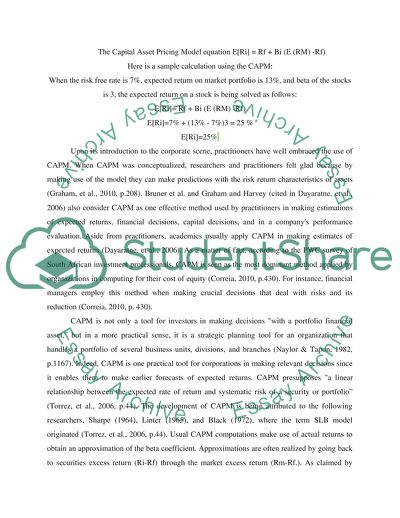Cite this document
(Capital Asset Pricing Model Coursework Example | Topics and Well Written Essays - 1500 words, n.d.)
Capital Asset Pricing Model Coursework Example | Topics and Well Written Essays - 1500 words. https://studentshare.org/finance-accounting/1765881-capital-asset-pricing-model-capm
Capital Asset Pricing Model Coursework Example | Topics and Well Written Essays - 1500 words. https://studentshare.org/finance-accounting/1765881-capital-asset-pricing-model-capm
(Capital Asset Pricing Model Coursework Example | Topics and Well Written Essays - 1500 Words)
Capital Asset Pricing Model Coursework Example | Topics and Well Written Essays - 1500 Words. https://studentshare.org/finance-accounting/1765881-capital-asset-pricing-model-capm.
Capital Asset Pricing Model Coursework Example | Topics and Well Written Essays - 1500 Words. https://studentshare.org/finance-accounting/1765881-capital-asset-pricing-model-capm.
“Capital Asset Pricing Model Coursework Example | Topics and Well Written Essays - 1500 Words”. https://studentshare.org/finance-accounting/1765881-capital-asset-pricing-model-capm.


